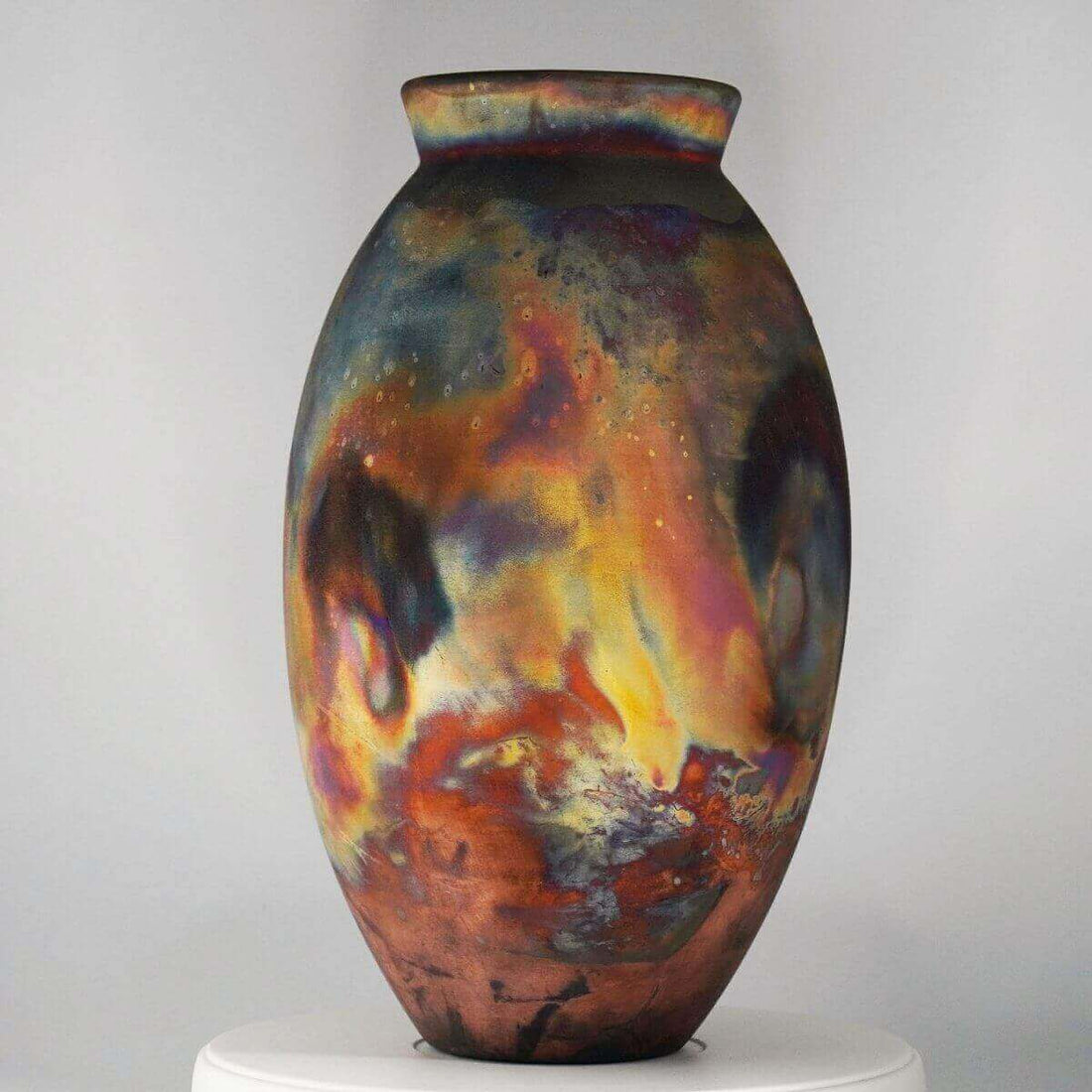
Caring for Raku Pottery: A Comprehensive Guide
Raku pottery stands as a testament to the fusion of art and science, captivating enthusiasts with its unique aesthetic and intricate techniques. This article delves into the captivating realm of raku pottery, exploring its historical origins, the specifics of copper matte raku pottery, the intricate process of crafting raku ceramics, and its contemporary applications. With a blend of artistic tradition and scientific expertise, raku pottery remains a cherished art form that requires careful care to preserve its beauty.

The History of Raku Pottery
Raku pottery traces its roots back to 16th-century Japan. Originating in the hands of the revered potter Chojiro, the term "raku" translates to "enjoyment" or "ease," reflecting the spontaneity of the process. Raku ware was initially favored for its use in traditional tea ceremonies due to its rustic appearance and tactile qualities. The firing process, characterized by rapid temperature changes and smoke-induced color variations, contributed to the uniqueness of raku pottery. This distinctive approach marked a departure from the precision-driven nature of other ceramic firing techniques.
What is Copper Matte Raku Pottery?
Among the various forms of raku pottery, copper matte raku pottery stands out for its vibrant hues and distinct finish. This type of raku involves applying a copper glaze, which, during the firing process, reacts with the atmosphere to create a stunning range of colors, from rich reds to deep blues and greens. The term "matte" refers to the matte texture that emerges after the final reduction phase in the kiln. This unique interplay of glaze and atmosphere has led to the copper matte raku technique being favored for its unpredictable and visually striking results.

How Raku Pottery is Made
The creation of raku pottery involves a meticulous sequence of steps, each contributing to the final masterpiece. The process typically begins with hand-building or wheel-throwing the clay vessel. Once formed, the piece is bisque-fired at a relatively low temperature. Afterward, the application of glaze, which can vary in composition, takes place. Copper matte raku pottery, for instance, employs a glaze rich in copper oxide, contributing to its characteristic colors.
The firing process itself is a delicate dance between artistry and control. The piece is placed in a kiln and fired to a specific temperature range, usually around 1800°F (982°C). At this point, the vessel is removed while glowing hot and transferred into a reduction chamber filled with combustible materials, like sawdust or newspaper. The combustion reduces the oxygen within the chamber, influencing the colors of the glaze. The rapid cooling and oxygen deprivation result in the signature crackled appearance and striking color variations characteristic of raku pottery.
Modern Applications of Raku Pottery
While deeply rooted in tradition, raku pottery has found a contemporary audience with its distinctive appearance and versatile applications. The unpredictability and individuality of each piece make it highly sought after by collectors and artists alike. Raku pottery frequently graces galleries, exhibitions, and homes as both functional and decorative art.
In the realm of functional art, raku pottery often takes the form of decorative vessels, bowls, and even jewelry. Its unique finish and crackled appearance make it an intriguing conversation piece, both visually and historically. Additionally, artists have been experimenting with the integration of raku pottery into modern interior and exterior design, adding an element of timeless elegance to spaces.
Caring for Raku Pottery: A Balance of Aesthetics and Preservation

Caring for raku pottery requires a delicate balance between appreciating its aesthetic qualities and preserving its longevity. Given the porous nature of raku ceramics, it's crucial to avoid exposing them to water for extended periods, as moisture can lead to cracking or even deterioration. Instead, consider using raku pieces for dry arrangements, enhancing their decorative appeal without compromising their structural integrity.
To prevent potential damage, it's advisable to display raku pottery away from direct sunlight. Sunlight exposure, especially ultraviolet (UV) radiation, can accelerate the oxidation process, potentially dulling the vibrant colors and intricate crackling. By placing your raku pieces in areas with indirect or diffused lighting, you can ensure their continued visual allure.
In conclusion, raku pottery's journey from its historical origins to its modern applications is a testament to its enduring allure. The copper matte raku technique, in particular, stands as an embodiment of the harmonious dance between glaze, atmosphere, and artistic intent. As you embrace the beauty of raku pottery, remember that caring for these pieces involves understanding their unique properties and taking deliberate steps to preserve their exquisite charm for generations to come.

1 comment
I inherited some raku pottery and it’s become very dull. Is there a way to make it shinier and also clean it?